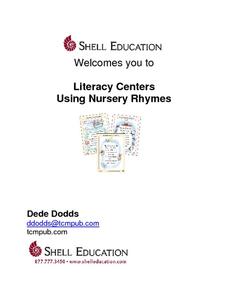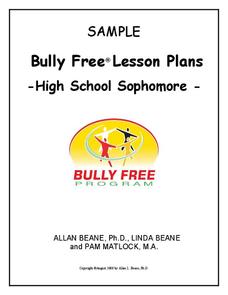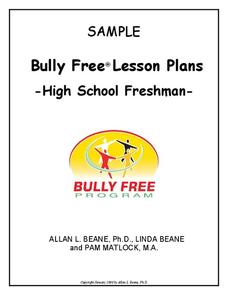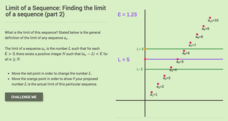Curated OER
Literacy Centers Using Nursery Rhymes
And in this corner we have Little Jack Horner. Engage your learners with phonemic awareness activities that encourage them to play with language. Eight different categories of phonemic awareness activities are detailed in the resource...
Curated OER
What Does Ginny Have?
In this grammar instructional activity, students read a short paragraph and then fill in 14 blanks within the paragraph with the correct form of the verbs have or has.
K12 Reader
Justify Your Answer
How do you check to see if an answer to a question is correct? Just follow the four simple steps outlined in this reading comprehension learning exercise.
Bully Free Systems
Bully Free Lesson Plans—10th Grade
Two lessons, "What Does Cyber Bullying Look Like?" and "Factors Influencing My Reporting the Bullying of Others," serve as examples of the 12 included in a Bully Free curriculum. Each plan includes discussion questions, an activity,...
It's About Time
Run and Jump
Has your class wondered how fast a human could run or how high they are capable of jumping? Help them understand these concepts as they explore acceleration and use an accelerometer to make semiquantitative measurements of acceleration...
Read Works
How to Say “I Ruff You”
Who says you need a human to be your valentine on Valentine's Day? Give your dog-loving readers an inspiring perspective on how a sister givdes her brother a valentine from the family dog. They then answer 10 questions thatd involve...
The Alamo
A Lesson in Citizenship
What does it mean to be an American citizen? Lieutenant Colonel Commander William Barret Travis believed that it meant honor to country first—even above one's own life. Middle and high schoolers read his final letters from the Alamo that...
Media Smarts
Thinking About Television and Movies
As part of their study of the influence of TV and films, class members consider how music, lighting, costumes, camera angles, etc. are used to influence the response of viewers.
Bully Free Systems
Bully Free Lesson Plans—Ninth Grade
"Bullying and Prejudice" and "Do You Cyber Bully," two lessons from a complete Bully Free program, serve as samples of the approach used in a unit designed to bring awareness to and to combat bullying. Each lesson asks class...
The New York Times
Revolt! Comparing Historical Revolutions
What elements are needed to have a revolution? How do historical revolutions from across the globe and generations compare with one another? This is an excellent activity that incorporates group work, source analysis, and an engaging...
TLS Books
Dictionary Skills Review
Why do we use a dictionary? Your scholars will tell you why while demonstrating their dictionary skills. In addition to stating the purpose of using dictionaries, they will also show what they know about guide words, alphabetizing,...
PBS
Stories of Painkiller Addiction: Contemplating Nature vs. Nurture
Does having an addict in your family make it more likely to become one yourself? Explore the genetic risk factors, as well as the prominent environmental influences, for substance addiction in a lesson that encourages awareness and open...
Curated OER
Simple Preparation Can Improve Reading Comprehension
Reading comprehension is key to success in nearly every subject in school, but how do you improve comprehension in a pupil with dyslexia? Here are several tips that define ways in which educators can provide strategies to improve overall...
Murrieta Valley Unified School District
Review and Assess: “The Inn of Lost Time”
Check out a resource made up of two separate exercises. The first page lists a series of higher-level questions about "The Inn of Lost Time" by Lensey Namoika. Use the questions to encourage discussion or as an assessment. Since they...
Curated OER
SOAPS Primary Source "Think" Sheet
Planning on using primary source materials? Introduce your class members to SOAPS, a worksheet that models how to analyze and reflect on primary source materials. Readers name the document, identify the subject (S), the...
Curated OER
Ready Set Go Woah: KWL for Ender's Game
Readers of Orson Scott Card's award-winning science fiction novel, Ender's Game use the provided KWL worksheet to list what they already know about war, what they think they will learn in reading the book, the new information they...
Pearson
Questions with Any, Some, How Much, How Many; Quantity Expressions
How many times do you need to review quantity expressions? Focus on the words any, how much, some, and how many with an engaging grammar presentation.
Curated OER
Which Number Should I Call?
Who do you call if you spot someone littering? What if you see a fire? Who should you contact if the garbage truck does not arrive? Find out with a 13-question worksheet equipped with scenarios for scholars to read and decide which of...
K12 Reader
Adverbs of Frequency II
Describe your daily activities with adverbs of frequency. Kids recall which things they seldom do, they rarely do, they frequently do, and the things that they never do.
Super Duper Publications
WH Question Cards - Pro: Who, What, When, Where, Why
Do you have kids on your caseload with wh questions goals, that need extra practice comprehending and asking who, what, when, where, and why questions? Then this clever app is designed for you!
Discovery Education
Our Brain and Body on Opioids
Use a presentation that explores the world of prescription opioids. Learners look at the way the brain responds to the drugs and the long terms effects opioids have on the brain and body. At the end of the lesson, groups create a social...
CK-12 Foundation
Limit of a Sequence: Finding the Limit of a Sequence (Part 2)
What does it mean if young mathematicians cannot put the squeeze on a sequence? Learners investigate a divergent sequence and find the formula for the nth term. Using the definition of a limit of a sequence, pupils try to find the limit...
Willow Tree
Parallel and Perpendicular Lines
Enhance your class's understanding of linear equations by extending their study to parallel and perpendicular lines. Young mathematicians learn the relationship between the slopes of parallel and perpendicular lines. They then use that...
Curated OER
Animal Brains
Do big bodies make big brains? Let your learners decide whether there is an association between body weight and brain weight by putting the data from different animals into a scatterplot. They can remove any outliers and then make a line...























